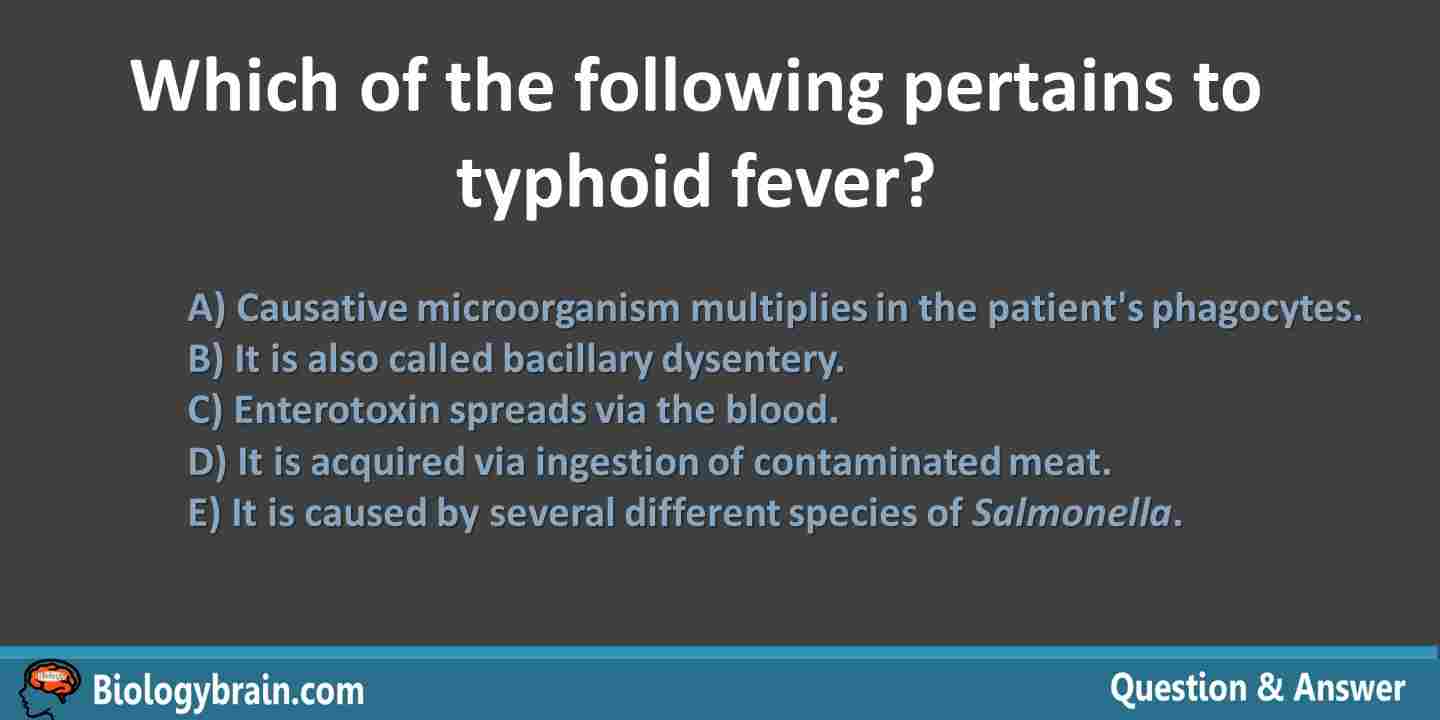Which of the following pertains to typhoid fever?
A) Causative microorganism multiplies in the patient’s phagocytes.
B) It is also called bacillary dysentery.
C) Enterotoxin spreads via the blood.
D) It is acquired via ingestion of contaminated meat.
E) It is caused by several different species of Salmonella.

Answer: A) Causative microorganism multiplies in the patient’s phagocytes.
Explanation: The causative agent of typhoid fever is only Salmonella enterica, a gram-negative bacterium that multiplies in the phagocytes of infected patients. The toxin produced from these bacteria is strictly localized in specific organs of the body especially the spleen and brain but not in the endothelium of blood vessels of other organs (e.g. lung, liver, and kidney). Typhoid fever easily spreads through contaminated water and food but not through contaminated meat. Lastly, bacillary dysentery is a type of dysentery caused by Shigella species but it is not caused by Salmonella spp.
Related question: Which of the following tests is an agglutination test for the bacterium causing typhoid fever?
References: Chong A et al., 2017. The Role of Typhoid Toxin in Salmonella Typhi Virulence . Yale J Biol Med.
Other questions:
Q. The alpha-helix and beta-sheet are found at which level of protein organization?
Q. Which cytoskeletal proteins provide the structural support for microvilli?
Q. Which of these does not contain a structural protein?
Q. What level of protein structure is associated with the sequence of amino acids?










